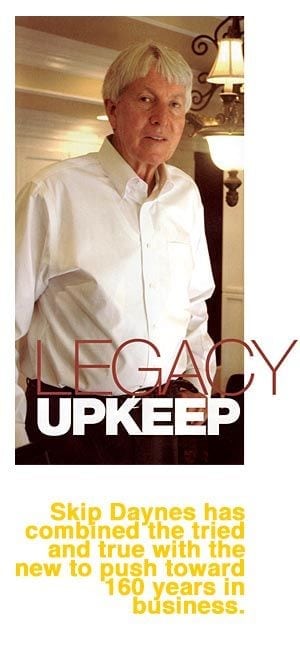
Staying in business for over 150 years takes all sizes of things. For Skip Daynes, the fourth generation owner of Daynes Music in Salt Lake City – founded 1862 – a strong legacy has helped perpetuate the business. But while the post-Civil War economy might have been more difficult than today’s, Daynes has had to work harder than ever to thrive lately. To stay ahead, he’s backed up the legacy – built on straightforward, old school principles – with some relatively small strategic adjustments. It’s working. He’s grown the business about 20 percent for the past two years straight.
1. Work hard. As a child, Daynes remembers a note his grandpa Royal Daynes had written up on the wall of Daynes Music: “What do we have to do to make a profit?” Hard work should go without saying, but when its small things like unboxing pianos or helping on an important delivery, Daynes never misses out.
“If owners aren’t willing to work, they’re not going to make any money,” he said. “You need to get out and stir the mud.” Canon, and with the right work ethic, all the other small things are more effective.
2. An outside opinion can make a huge difference. In Daynes’ case, it was Larry Jackstein, a marker and pianist, who gave Daynes some needed perspective. Jackstein had intimate experience marketing in the Salt Lake City area. More importantly, he was a friend, and his fee followed accordingly.
3. Jackstein’s main advice for Daynes: Change your image. “When people think about Daynes Music, they think Steinway, expensive and old,” Daynes said. Instead of changing that perception, Daynes opened a second store in an extra building he owned. He called it Discount Piano Warehouse, and it has opened the door for less-expensive lines and more mainstream markets.
4. Offer premium services that require little overhead. With new customers flocking into a second store, Daynes has found a way to help them come back and, possibly, leave with the Steinway. Through his 25-year trade-up guarantee, Daynes lets customers trade in their pianos, for whatever they paid, toward a bigger and better model.
5. Make a performance space. Back over in Daynes Music, Daynes turned a storage space into an 80 seat recital hall. It’s full every evening with teachers, parents and students walking past all the Steinways in order to sit down. Daynes also records the performances and offers free CDs.
6. Buy the right print music. To serve teachers and artists, Daynes has dedicated 10 percent of floor space to a library of symphony repertoire and other high brow merchandise that matches the Steinways. It doesn’t make a profit. It’s a posh service, and it furthers his reputation.
7. Teach for free. Daynes fishes for nearly all available markets, including recreational music makers. It’s not only an opportunity to get them hooked, it’s a chance to, like parents at a recital, bring them near beautiful Steinways and friendly stuff.
8. Think differently about outside events. Daynes’ favorite outside event goes at it backwards. He provides a scholarship to a local college, and then holds a three-day selling/concert event where attendees buy to fund the next scholarship.
“You’re giving the school something in advance, and they’re more likely to help you with their good patrons and their good alumni, and to provide you with a good space and students to help,” he said.
9. Donate to and participate in local arts. The scholarship sale isn’t pure philanthropy, but Daynes has his share of that, as well. He believes it gets the name in front of people, who will think “Daynes” if they ever consider buying an instrument.
10. Build a legacy in little bites. The donations go back to Daynes Music’s legacy. the civic commitment by Daynes’ four generations helped create what is now the Utah Symphony and Ballet West. They didn’t intend this when they provided space for musicians to practice.
Similarly, Daynes Music didn’t make it 150 years in chunks of 50 years, or even chunks of one. It did it one day at a time, a mindset that helps Skip re-examine the business each day.
[This article is from the December 2006 issue of Music Inc., an industry trade magazine.]